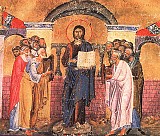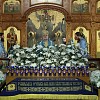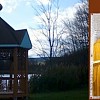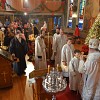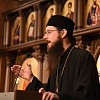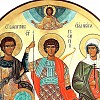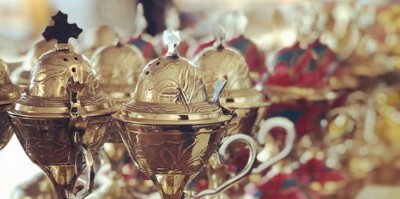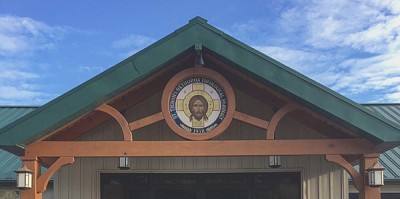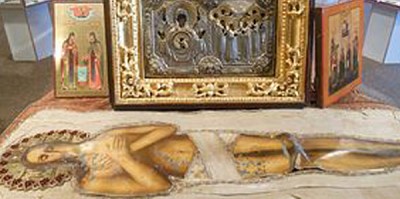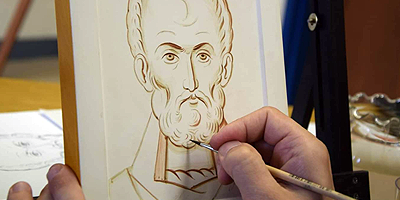September 1 is the often overlooked beginning of the Church's New Year.
The practice of having the Church's Year begin in late summer has many historical elements:
On this day, when the Jews celebrated the new summer, the Savior, came to Nazareth where He was brought up and entered the synagogue on the Sabbath day as was His custom, and read these words of the Prophet Isaiah: "The Spirit of the Lord is upon me because he has anointed Me ... to proclaim the acceptable year of the Lord" (Luke 4, 18:19). On the first of September 312 the Emperor Constantine the Great won a victory over Maxentius. After this Christians were granted complete freedom to confess their faith. In commemoration of these two events the fathers of the First Ecumenical Council decided to begin the New Year on the first of September. (1)
It is also called the 'Indiction from the Latin word for decree or 'to impose'. When Constantinople fell in 1453, the Patriarchs issued a new indiction retaining September 1 as the start of the Church Year:
Since the completion of each year takes place, as it were, with the harvest and gathering of the crops into storehouses, and we begin anew from henceforth the sowing of seed in the earth for the production of future crops, September is considered the beginning of the New Year. The Church also keeps festival this day, beseeching God for fair weather, seasonable rains, and an abundance of the fruits of the earth. (2)
Besides the historical significance there is another, spiritual meaning for Orthodox Christians:
It’s our Ecclesiastical New Year, but you will not see any fireworks. It quietly comes once a year in September so that members of the Orthodox Faith can again experience, participate, and remember the 12 Great Feasts of our Church. This succession of feasts allows us to live the life of Christ from his very birth, or rather, from the birth of his mother. The church allows us to participate in the life of Jesus through Scripture, through icons, and through the liturgy. Orthodox Christians will draw on all three sources in order to enrich the lives and increase their knowledge and relationship with God.
With the rising and setting of the sun, with the moon and the stars, we learn that there exists a daily rhythm. The succession of days teaches us the weekly cycle, the seven days modeled on the account of creation (Gen.1-2:4). The liturgical year is in harmony with the seasonal cycle, according to the order to nature. Our feasts are inserted into the created world and give it all its meaning. This is no accident, for God has sent his Son into this world and is thus bodily linked to the cosmos. Each feast is an encounter between heaven and earth, between the Creator and his creature. (3)
(1) Holy Trinity Russian Orthodox Calendar
(2) Goarch Online Calendar
(3) Excerpt from 'The Incarnate God'
|
| |||||||||||||
175 St. Tikhon's Road
Waymart, PA 18472
Sat
22FebMemorial Saturday
7:40 Hours & Divine Liturgy
4:00 VigilSun
23FebLast Judgment
9:10 Hours and Divine Liturgy
4:30 Vespers & MatinsMon
24FebMeat Fast
6:00 Midnight Office, Hours, & Liturgy
4:30 Vespers & Matins

